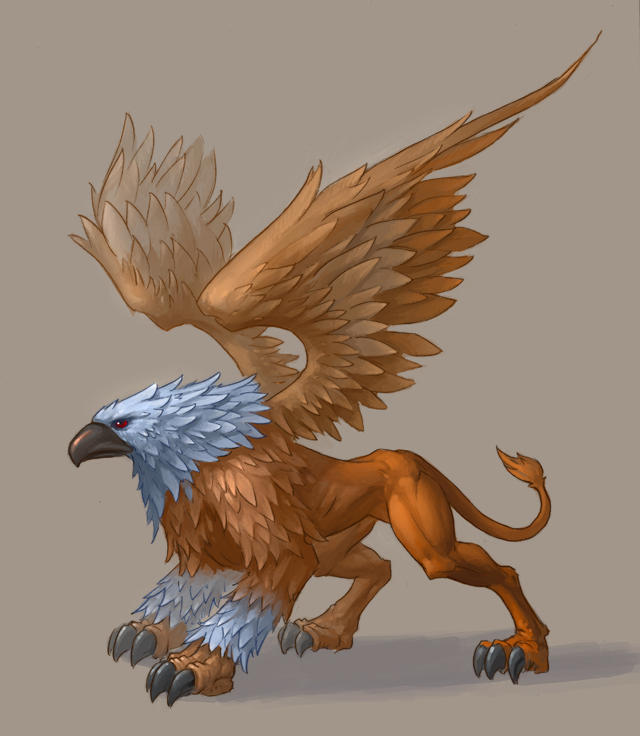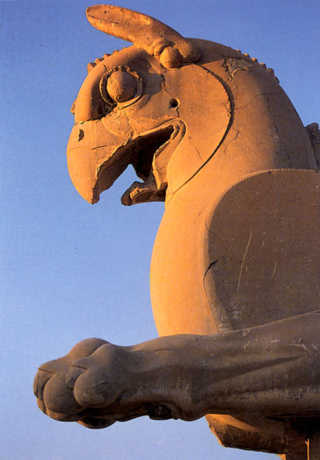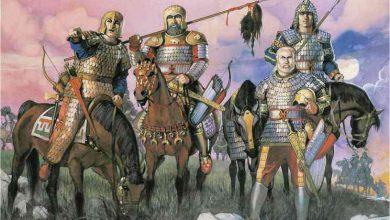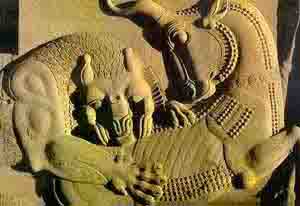Shirdal Griffin or Gryphon in ancient Iran

Griffin or Griffon ( Griffon / Gryphon ) which is called Shirdal in Farsi ( Dal means eagle in Farsi )It is one of the common mythical animals among many Asian and European peoples, which has a body like a lion and a head and wings like an eagle.: A prosperous king whose body was like the king of the forest and whose head was the head of the king of the sky and guarded the hidden treasures of the world.
Griffin
Lions are seen more than anywhere else in the art and culture of ancient Greece. As usual, the Greeks were more active in spreading the belief in such a creature than any other people, and in their culture and art, they have mentioned many different lions.. But the ancient Egyptians from ca 5300 last year ( Probably before the Greeks ) They had met Shirdal.
The oldest sherdals discovered in Central Asia date back to the fifth and fourth centuries BC and belong to the subordinate governments of the Achaemenid Empire..
…
The Achaemenids considered Shirdal to be a "guard against the devil, magic and lies".. The heads of the famous Achaemenid columns are one of the most famous human artefacts that show lions. The name of this animal in Middle Persian is "Bashkooch"..
Many people believe that Simorgh is a new form of Shirdal or Beshkouch in Persian classical literature, although Simorgh itself is a name. ( Sein Moro : Chinese chicken ) It goes back to before Islam. The return of the name of this legendary bird to the land of China can reveal the original origin of the lion legend.

Shirdal has been mentioned a lot in European literature. For example, in the Divine Comedy, where the journey ends in hell and purgatory, Dante began the journey to heaven on a lightning-fast lion..
But this is not the first appearance of lion in Italian culture. In Pisa, from medieval Italy, a brass faucet has survived that seems to have originated in Islamic lands or was made by Muslim craftsmen.. This Shirdal, which is the largest Shirdal statue of the Islamic period, is more than one meter tall and was probably built in the 11th century in Andalus. ( Andaluce ) it was made.
Lions were usually thought of as wingless, but in family crests that became common in Europe from the 11th century, lions' forelegs looked like eagles' feet, and some lions had obvious wings..
The griffins were loyal creatures of the fairy tales and even if their mate died, they would not mate after him..
It is said that the negative view of the church with remarriage in honor of this legend was related to lions, because the church considered the lion, which was an earthly and heavenly being, a symbol of Jesus Christ. ( ع) thought.
However, legends are not always compatible. It is said that sometimes Shirdals mate with horses, and from their offspring is an animal called Espedal ( Hippogriff ) was born.
According to European legends, lion's claw was healing and lion's feather could restore sight to blind eyes, but what was sold in European apothecaries as lion's claw was nothing but antelope horn. .
But where is the origin of all these legends?
Unlike any other animal discussed, there is no equivalent among the fauna of the Middle East, Egypt, or Greece to suggest that the lion is a fictionalized version of such a creature. .
Until Ms. Adrian Meher, an anthropologist and specialist in the history of science at Stanford University, who has done a lot of research on legends and the history of paleontological discoveries, expressed an interesting opinion..
According to Mrs. Meher, Shirdal was the image that the traders of the ancient era who traveled on the Silk Road in the Altai mountains in the land of the Scythians. ( Kazakhstan and Mongolia today ) Their eyes are filled with the fossilized skeletons of a medium-sized dinosaur called Protoceratops, which is still found in abundance in these areas.!
Because of the special shape of this animal's beak, its four legs, and its protruding head and collar, this skeleton meant nothing but the remains of unknown and magical animals to the people of that time.. It is not surprising that the first lions were not seen in Central Asia, because the land where the fossils of Protoceratops were found was not the birthplace of any civilization, but it was the passage of many caravans that traveled to these areas in ancient times..
Taken from Goya Online






درود
Thank you. It was great as always. I took advantage.
so long live.
Thank you for your love
I am glad that you liked it, dear lady